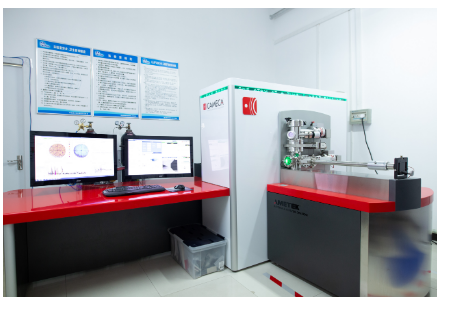
Parameters:
Applications
Atom Probe Tomography (APT) is the only material analysis technique offering extensive capabilities for both 3D imaging and chemical composition measurements at the atomic scale (around 0.1-0.3 nm resolution in depth and 0.3-0.5 nm laterally).
Features
The sample is prepared in the form of a very sharp tip. The cooled tip is biased at high DC voltage (3-15 kV). The very small radius of the tip and the high voltage induce a very high electrostatic field (tens V/nm) at the tip surface, just below the point of atom evaporation. Under laser or HV pulsing, one or more atoms are evaporated from the surface, by field effect (near 100% ionization), and projected onto a Position Sensitive Detector (PSD) with a very high detection efficiency. Ion efficiencies are as high as 80%, the highest analytical efficiency of any 3D microscopy.
The detector allows to simultaneously measure:
• The time of flight of the ions: measuring the time between the laser or voltage pulse and the arrival on the PSD allows to determine the m/q ratio (mass over charge ratio).
• The (X,Y) position of the ion impact on the detector: measuring the X-Y position and the order of arrival of the ions on the PSD allows to reconstruct the original position of the atoms on the tip.
By repeating this sequence, the atoms are progressively removed from the tip, and a 3D image of the material can be reconstructed at the atomic scale.
The LEAP 5000 XR incorporates the advanced reflection design and enhanced detector performance (detection efficiency increased to ~ 50%) and adds all the benefits of advanced laser pulsing capable of repetition rates of up to 500 kHz. The LEAP 5000 XR is the most capable atom probe across the widest variety of research and development applications.